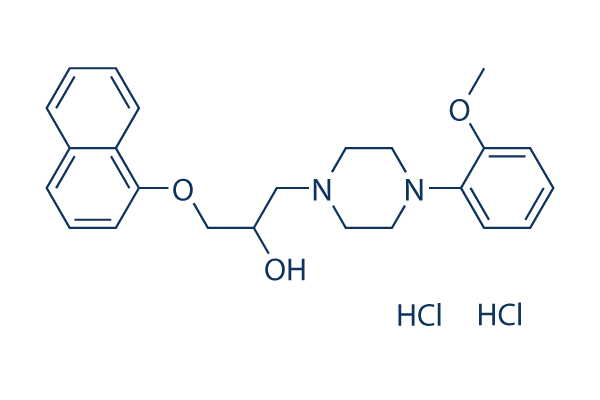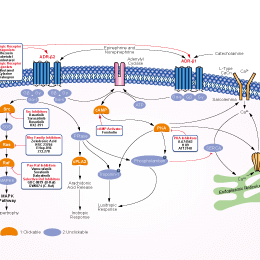
- Bioactive Compounds
- By Signaling Pathways
- PI3K/Akt/mTOR
- Epigenetics
- Methylation
- Immunology & Inflammation
- Protein Tyrosine Kinase
- Angiogenesis
- Apoptosis
- Autophagy
- ER stress & UPR
- JAK/STAT
- MAPK
- Cytoskeletal Signaling
- Cell Cycle
- TGF-beta/Smad
- DNA Damage/DNA Repair
- Compound Libraries
- Popular Compound Libraries
- Customize Library
- Clinical and FDA-approved Related
- Bioactive Compound Libraries
- Inhibitor Related
- Natural Product Related
- Metabolism Related
- Cell Death Related
- By Signaling Pathway
- By Disease
- Anti-infection and Antiviral Related
- Neuronal and Immunology Related
- Fragment and Covalent Related
- FDA-approved Drug Library
- FDA-approved & Passed Phase I Drug Library
- Preclinical/Clinical Compound Library
- Bioactive Compound Library-I
- Bioactive Compound Library-Ⅱ
- Kinase Inhibitor Library
- Express-Pick Library
- Natural Product Library
- Human Endogenous Metabolite Compound Library
- Alkaloid Compound LibraryNew
- Angiogenesis Related compound Library
- Anti-Aging Compound Library
- Anti-alzheimer Disease Compound Library
- Antibiotics compound Library
- Anti-cancer Compound Library
- Anti-cancer Compound Library-Ⅱ
- Anti-cancer Metabolism Compound Library
- Anti-Cardiovascular Disease Compound Library
- Anti-diabetic Compound Library
- Anti-infection Compound Library
- Antioxidant Compound Library
- Anti-parasitic Compound Library
- Antiviral Compound Library
- Apoptosis Compound Library
- Autophagy Compound Library
- Calcium Channel Blocker LibraryNew
- Cambridge Cancer Compound Library
- Carbohydrate Metabolism Compound LibraryNew
- Cell Cycle compound library
- CNS-Penetrant Compound Library
- Covalent Inhibitor Library
- Cytokine Inhibitor LibraryNew
- Cytoskeletal Signaling Pathway Compound Library
- DNA Damage/DNA Repair compound Library
- Drug-like Compound Library
- Endoplasmic Reticulum Stress Compound Library
- Epigenetics Compound Library
- Exosome Secretion Related Compound LibraryNew
- FDA-approved Anticancer Drug LibraryNew
- Ferroptosis Compound Library
- Flavonoid Compound Library
- Fragment Library
- Glutamine Metabolism Compound Library
- Glycolysis Compound Library
- GPCR Compound Library
- Gut Microbial Metabolite Library
- HIF-1 Signaling Pathway Compound Library
- Highly Selective Inhibitor Library
- Histone modification compound library
- HTS Library for Drug Discovery
- Human Hormone Related Compound LibraryNew
- Human Transcription Factor Compound LibraryNew
- Immunology/Inflammation Compound Library
- Inhibitor Library
- Ion Channel Ligand Library
- JAK/STAT compound library
- Lipid Metabolism Compound LibraryNew
- Macrocyclic Compound Library
- MAPK Inhibitor Library
- Medicine Food Homology Compound Library
- Metabolism Compound Library
- Methylation Compound Library
- Mouse Metabolite Compound LibraryNew
- Natural Organic Compound Library
- Neuronal Signaling Compound Library
- NF-κB Signaling Compound Library
- Nucleoside Analogue Library
- Obesity Compound Library
- Oxidative Stress Compound LibraryNew
- Plant Extract Library
- Phenotypic Screening Library
- PI3K/Akt Inhibitor Library
- Protease Inhibitor Library
- Protein-protein Interaction Inhibitor Library
- Pyroptosis Compound Library
- Small Molecule Immuno-Oncology Compound Library
- Mitochondria-Targeted Compound LibraryNew
- Stem Cell Differentiation Compound LibraryNew
- Stem Cell Signaling Compound Library
- Natural Phenol Compound LibraryNew
- Natural Terpenoid Compound LibraryNew
- TGF-beta/Smad compound library
- Traditional Chinese Medicine Library
- Tyrosine Kinase Inhibitor Library
- Ubiquitination Compound Library
-
Cherry Picking
You can personalize your library with chemicals from within Selleck's inventory. Build the right library for your research endeavors by choosing from compounds in all of our available libraries.
Please contact us at info@selleckchem.com to customize your library.
You could select:
- Antibodies
- Bioreagents
- qPCR
- 2x SYBR Green qPCR Master Mix
- 2x SYBR Green qPCR Master Mix(Low ROX)
- 2x SYBR Green qPCR Master Mix(High ROX)
- Protein Assay
- Protein A/G Magnetic Beads for IP
- Anti-Flag magnetic beads
- Anti-Flag Affinity Gel
- Anti-Myc magnetic beads
- Anti-HA magnetic beads
- Poly DYKDDDDK Tag Peptide lyophilized powder
- Protease Inhibitor Cocktail
- Protease Inhibitor Cocktail (EDTA-Free, 100X in DMSO)
- Phosphatase Inhibitor Cocktail (2 Tubes, 100X)
- Cell Biology
- Cell Counting Kit-8 (CCK-8)
- Animal Experiment
- Mouse Direct PCR Kit (For Genotyping)
- New Products
- Contact Us
research use only
Naftopidil DiHCl Adrenergic Receptor antagonist
Naftopidil DiHCl (Flivas, KT-611, Avishot,BM-15275) is a selective 5-HT1A and α1-adrenergic receptor antagonist with IC50 of 0.1 μM and 0.2 μM, respectively.

Chemical Structure
Molecular Weight: 465.41
Purity & Quality Control
Batch:
Purity:
99.57%
99.57
Related Products
| Related Targets | α-adrenergic receptor β-adrenergic receptor Beta-Adrenergic Receptor | Click to Expand |
|---|---|---|
| Related Products | Zenidolol (ICI-118551) Hydrochloride Yohimbine HCl L755507 Atipamezole Higenamine hydrochloride Fenoterol hydrobromide Medetomidine HCl Rauwolscine hydrochloride Deoxycorticosterone acetate Detomidine HCl Naftopidil | Click to Expand |
| Related Compound Libraries | FDA-approved Drug Library Natural Product Library Neuronal Signaling Compound Library CNS-Penetrant Compound Library Anti-alzheimer Disease Compound Library | Click to Expand |
Signaling Pathway
Mechanism of Action
| Features | Higher selectivity for the -1A and -1D subtypes. | ||||
|---|---|---|---|---|---|
| Targets |
|
In vitro |
||||
| In vitro | Naftopidil diHCl possesses 5-HT1A agonistic properties in addition to being an α1-adrenoceptor antagonist. [1] Naftopidil has growth inhibitory effect in androgen-sensitive and -insensitive human prostate cancer cell lines. Naftopidil inhibits the growth of androgen-sensitive LNCaP cells and androgen-insensitive PC-3 cells with IC50 of 22.2 μM and 33.2 μM, respectively. Cell growth inhibition by Naftopidil is due to the arrest of the G1 cell cycle. Expressions of p27kip1 and p21cip1 are significantly increased in LNCaP cells treated with Naftopidil. In PC-3 cells, Naftopidil induces p21cip1 but not p27kip1. [2] Naftopidil produces a concentration-dependent inhibition of collagen-induced Ca2+ mobilization, maximum inhibition (22.9%) occurring with 40 μM Naftopidil. The adrenaline-induced rise in [Ca2+]i is inhibited dose dependently by Naftopidil. [3] Naftopidil is significantly more effective than tamsulosin in relieving nocturia. [4] Naftopidil induces G(1) cell-cycle arrest in both PCa cells and PrSC. In Naftopidil-treated PrSC, total interleukin-6 protein is significantly reduced with increased suppression of cell proliferation. [5] |
|||
|---|---|---|---|---|
| Cell Research | Cell lines | LNCaP and PC-3 cell lines | ||
| Concentrations | 20 μM, 40 μM | |||
| Incubation Time | 24 hours | |||
| Method | Cell cycle analysis is performed by flow cytometry. Cells are treated with either 20 μM Naftopidil (LNCaP), 40 μM Naftopidil (PC-3) or vehicle (0.1% DMSO) for 24 hours, then trypsinized and washed once with phosphate-buffer saline (PBS), fixed in 70% ethanol and stored at 4 °C for subsequent cell cycle analysis. Fixed cells are washed with PBS and incubated with PBS containing 20 μg/mL RNaseA and 0.3% NP-40 for 30 minutes at 37 °C, then stained with 50 μg/mL propidium iodide (PI) for 30 minutes at 4 癈 in the dark. The DNA content of 1 ?106 stained cells is analyzed on a FACS Caliburflow cytometer. The fractions of cells in the G0/G1, S and G2/M phases are calculated using Cell Quest software. |
|||
In Vivo |
||
| In vivo | Oral administration of Naftopidil to nude mice inhibits the growth of PC-3 tumors as compared to vehicle-treated controls. Naftopidil improves bladder capacity and relaxed voiding via inhibition of afferent nerve activity. [2] Naftopidil (0.1 μg–30 μg) transiently abolishes isovolumetric rhythmic bladder contraction. The amplitude of bladder contraction is decreased by intrathecal injection of naftopidil (3 μg–30 μg). [6] Naftopidil selectively inhibits the phenylephrine-induced increase in prostatic pressure compared with mean blood pressure in the anesthetized dog model. [7] |
|
|---|---|---|
| Animal Research | Animal Models | Athymic nude mice bearing PC-3 cells |
| Dosages | 10 mL/kg/day | |
| Administration | Orally | |
References |
|
Chemical Information
| Molecular Weight | 465.41 | Formula | C24H28N2O3.2HCl |
| CAS No. | 57149-08-3 | SDF | Download SDF |
| Synonyms | Flivas, KT-611, Avishot,BM-15275 | ||
| Smiles | COC1=CC=CC=C1N2CCN(CC2)CC(COC3=CC=CC4=CC=CC=C43)O.Cl.Cl | ||
Storage and Stability
| Storage (From the date of receipt) | |||
|
In vitro |
DMSO : 41 mg/mL ( (88.09 mM) Moisture-absorbing DMSO reduces solubility. Please use fresh DMSO.) Ethanol : 2 mg/mL Water : Insoluble |
Molecular Weight Calculator |
|
In vivo Add solvents to the product individually and in order. |
In vivo Formulation Calculator |
|||||
Preparing Stock Solutions
Molarity Calculator
In vivo Formulation Calculator (Clear solution)
Step 1: Enter information below (Recommended: An additional animal making an allowance for loss during the experiment)
mg/kg
g
μL
Step 2: Enter the in vivo formulation (This is only the calculator, not formulation. Please contact us first if there is no in vivo formulation at the solubility Section.)
% DMSO
%
% Tween 80
% ddH2O
%DMSO
%
Calculation results:
Working concentration: mg/ml;
Method for preparing DMSO master liquid: mg drug pre-dissolved in μL DMSO ( Master liquid concentration mg/mL, Please contact us first if the concentration exceeds the DMSO solubility of the batch of drug. )
Method for preparing in vivo formulation: Take μL DMSO master liquid, next addμL PEG300, mix and clarify, next addμL Tween 80, mix and clarify, next add μL ddH2O, mix and clarify.
Method for preparing in vivo formulation: Take μL DMSO master liquid, next add μL Corn oil, mix and clarify.
Note: 1. Please make sure the liquid is clear before adding the next solvent.
2. Be sure to add the solvent(s) in order. You must ensure that the solution obtained, in the previous addition, is a clear solution before proceeding to add the next solvent. Physical methods such
as vortex, ultrasound or hot water bath can be used to aid dissolving.
Tech Support
Answers to questions you may have can be found in the inhibitor handling instructions. Topics include how to prepare stock solutions, how to store inhibitors, and issues that need special attention for cell-based assays and animal experiments.
Tel: +1-832-582-8158 Ext:3
If you have any other enquiries, please leave a message.
* Indicates a Required Field






































